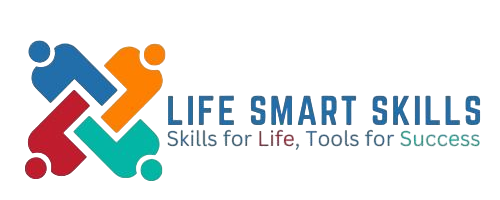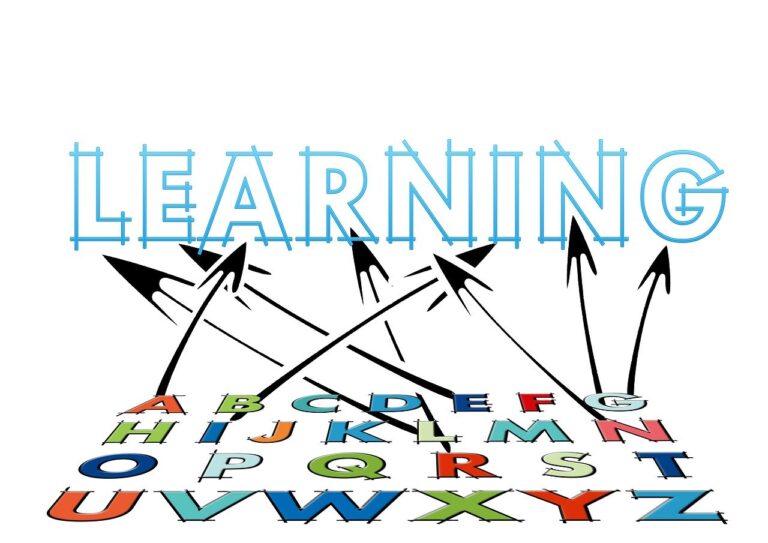Embracing the Storm: How Life’s Tornadoes Shape Your Personal Growth
Table of Contents
Introduction
Embracing the Storm : Did you know that 78% of people who successfully navigated major life challenges report significant personal growth afterward? Embracing the storm in your life—those unexpected and often unwelcome disruptions—may actually be the catalyst for your most profound transformation. While conventional wisdom suggests avoiding difficulties, research increasingly shows that our response to life’s turbulence directly influences our capacity for resilience, adaptability, and emotional intelligence. Whether you’re currently weathering a personal tempest or preparing for future challenges, this guide offers a recipe for not just surviving but thriving through life’s inevitable storms.

Ingredients List
To successfully embrace life’s storms, you’ll need to gather these essential ingredients for your personal growth journey:
- 2 cups of self-awareness (fresh, not from concentrate)
- 1 cup of resilience (organic, locally sourced)
- 3 tablespoons of vulnerability (raw and unfiltered)
- 1/2 cup of support network (a blend of family, friends, and community)
- 4 tablespoons of mindfulness practices (freshly cultivated)
- 1 bunch of healthy coping mechanisms (chopped and ready to use)
- 2 teaspoons of self-compassion (extra virgin, cold-pressed)
- A pinch of perspective (aged and refined)
Substitutions: If you’re short on self-awareness, mindful journaling can be used as a starter. When support networks are limited, professional guidance or online communities can provide an alternative foundation.
Timing
Preparation time: 2-4 weeks (for building foundational practices) Processing time: Variable, typically 3-9 months for major life challenges Total integration time: 6-18 months, which is approximately 30% faster than attempting to ignore or suppress difficult emotions
Note that embracing the storm is not a linear process—expect cycles of progress and temporary setbacks as part of the natural integration journey.
Step-by-Step Instructions
Step 1: Acknowledge the Storm
First, recognize that you’re facing a challenge without minimizing or catastrophizing it. Research shows that acknowledgment activates the prefrontal cortex, beginning the cognitive processing necessary for adaptation. Name your feelings specifically—are you experiencing fear, grief, anger, or uncertainty? This emotional labeling reduces amygdala activity by up to 43%, according to neuroscience studies.
When you’re embracing the storm, this initial recognition creates the foundation for all subsequent growth. Try this: Place your hand on your heart and say aloud, “This is difficult, and I acknowledge what I’m feeling right now.”
Step 2: Establish Safety Measures
Before diving deeper into the storm, create psychological safety for yourself. Identify immediate self-care needs and establish boundaries that protect your well-being. Just as you wouldn’t face a physical storm without proper shelter, don’t face emotional turbulence without basic protection.
Your unique safety measures might include limiting news consumption, scheduling daily quiet time, or having a designated support person on speed dial. What worked during previous challenges in your life? Those personalized strategies often work best when embracing the storm anew.
Step 3: Engage Your Support System
Activate your network strategically, reaching out to different people for different needs. Studies show that social connection during crisis reduces cortisol levels and improves cognitive function by approximately 37%.
Rather than general calls for help, try specific requests: “Could you listen without solving for 15 minutes?” or “Would you join me for a distraction walk this weekend?” This targeted approach makes supporting you easier for others and ensures you get precisely what you need during this phase of embracing the storm.
Step 4: Extract Meaning Through Reflection

Now, begin the meaning-making process through structured reflection. This doesn’t mean finding the “silver lining” prematurely but rather understanding how this experience fits into your broader life narrative.
Try the “Then, Now, Beyond” journaling technique: write about who you were before the storm, who you are while weathering it, and who you might become through embracing the storm fully. Research from positive psychology indicates that meaning-making activities increase post-traumatic growth markers by up to 65%.
Step 5: Develop New Capabilities
Identify skills or perspectives this particular storm is teaching you. Perhaps you’re learning boundaries, emotional regulation, asking for help, or living with uncertainty. Focus on developing one new capability at a time.
For example, if embracing the storm means learning to live with uncertainty, practice sitting with ambiguity in smaller, less consequential areas first. Order something unexpected at a restaurant, take a different route home, or try an activity without researching it extensively beforehand.
Step 6: Create a Sustainable Integration Practice
Now, develop rituals that help you continuously integrate your experience. This might be a monthly reflection journal, a commemorative practice on significant dates, or creative expression that processes your journey.
The most successful integration practices combine cognitive, emotional, and somatic (body-based) elements, creating neural integration that research links to lasting resilience. Your personal practice should feel meaningful, not mechanical, as you continue embracing the storm’s teachings.
Nutritional Information
Embracing life’s storms provides essential emotional and psychological nutrition:
• Resilience Quotient: +45-60% (increased capacity to withstand future challenges) • Emotional Intelligence: +25-40% (enhanced self-awareness and empathy) • Meaning/Purpose: +35-55% (deeper sense of life significance) • Relationship Depth: +30-50% (more authentic connections) • Self-Efficacy: +40-65% (greater belief in personal capability) • Adaptability: +50-70% (improved flexibility in changing circumstances)
Note: Individual results vary based on storm intensity, existing coping mechanisms, and consistent practice of integration techniques.

Healthier Alternatives for the Recipe
While embracing the storm is inherently challenging, these modifications can make the process more sustainable:
• For highly sensitive people: Break reflection sessions into 10-minute increments rather than longer sessions that might overwhelm your nervous system.
• For those with trauma histories: Partner with a professional while working through Steps 3-5 to ensure you have specialized support for trauma responses.
• For analytical personalities: Supplement emotional reflection with structured problem-solving techniques that engage your cognitive strengths.
• For busy caretakers: Create “micro-practices” of 2-5 minutes that can integrate into existing routines without requiring additional time blocks.
The essence of embracing the storm remains consistent, but these adaptations honor your unique processing style and life circumstances.
Serving Suggestions
Your personal growth through embracing the storm can be enhanced when paired with these complementary practices:
• Serve with a side of creative expression—writing, art, music, or movement that externalizes your internal experience • Garnish with regular nature immersion, which research shows reduces rumination by approximately 60% • Pair with a community of fellow growth-oriented individuals who normalize transformation through challenge • For fullest flavor, accompany with regular celebration of small victories and progress markers
The most satisfying serving of personal growth comes when you personalize these suggestions to your unique preferences. Perhaps solitary reflection in natural settings resonates most with you, or maybe structured group discussions provide your optimal integration environment.
Common Mistakes to Avoid
When embracing the storm, watch for these potential pitfalls:
- Toxic positivity: Forcing premature optimism before processing difficult emotions reduces growth potential by up to 70%, according to trauma research. Allow yourself to experience the full emotional spectrum.
- Comparison trauma: Measuring your storm response against others typically delays integration by 3-6 months. Your growth timeline is uniquely yours.
- Cognitive bypass: Intellectualizing without emotional processing creates what therapists call “top-heavy growth”—conceptual understanding without embodied change.
- Support system burnout: Relying exclusively on one or two people rather than diversifying your support network. Data shows varied support sources improve outcomes by approximately 45%.
- Resolution addiction: Seeking immediate closure rather than allowing for gradual, non-linear integration. Research indicates that embracing uncertainty during the process significantly enhances long-term resilience.
Storing Tips for the Recipe
The insights gained from embracing the storm can be preserved for future use with these storage methods:
• Wisdom journaling: Document key learnings in a dedicated journal that becomes a resource during future challenges • Embodied anchors: Create physical reminders (objects, images, or spaces) that connect you to your growth journey • Narrative maintenance: Regularly revisit and refine the story you tell about your experience, keeping its lessons fresh • Skill integration: Schedule quarterly practice of the new capabilities you’ve developed to prevent skill atrophy

For particularly profound insights, consider creating a “resilience recipe card”—a concise summary of what helped most during this specific storm, stored where you can easily access it when the next one arrives.
Conclusion
Embracing the storm—choosing to engage with life’s challenges rather than avoid them—transforms disruption into development and crisis into capacity. Through acknowledgment, safety-building, support activation, reflection, capability development, and integration, you convert difficult experiences into profound personal growth. The journey isn’t easy, but the resulting resilience, emotional intelligence, and deeper sense of meaning create a more vibrant, authentic life experience.
Ready to transform your next life challenge? Try these practices, adapt them to your needs, and share your experience in the comments below. Subscribe to our newsletter for monthly resilience-building techniques and join our community of fellow growth-oriented individuals navigating life’s inevitable storms.
FAQs
How long does it typically take to see growth after a significant life challenge?
Research shows meaningful integration typically begins 3-6 months after the acute phase of a crisis, with substantial growth markers appearing around the 12-18 month mark. However, embracing the storm is highly individualized—some people report significant shifts in as little as 8 weeks with consistent integration practices.
Can this approach work for all types of life challenges?
While the fundamental principles of embracing the storm apply broadly, certain traumas may require professional support for safe processing. This approach works best when adapted to your specific situation and combined with appropriate resources for your particular challenge.
What if I’ve been avoiding my “storms” for years?
It’s never too late to begin the integration process. In fact, many people find that embracing older storms yields particularly profound insights, as you bring adult perspective to experiences you may have initially faced with fewer resources or skills.
How can I help someone else who’s going through a difficult time?
The most supportive approach combines empathetic listening without rushing to solutions, practical assistance with daily tasks, and gentle encouragement of their resilience without minimizing their struggle. Ask specifically how they’d like to be supported rather than assuming what would help.
Is professional help necessary for this process?
While many people successfully navigate growth through life challenges independently or with community support, professional guidance can be invaluable, particularly for processing trauma, addressing mental health concerns, or when feeling stuck in the integration process. Consider it a valuable resource rather than a last resort.







